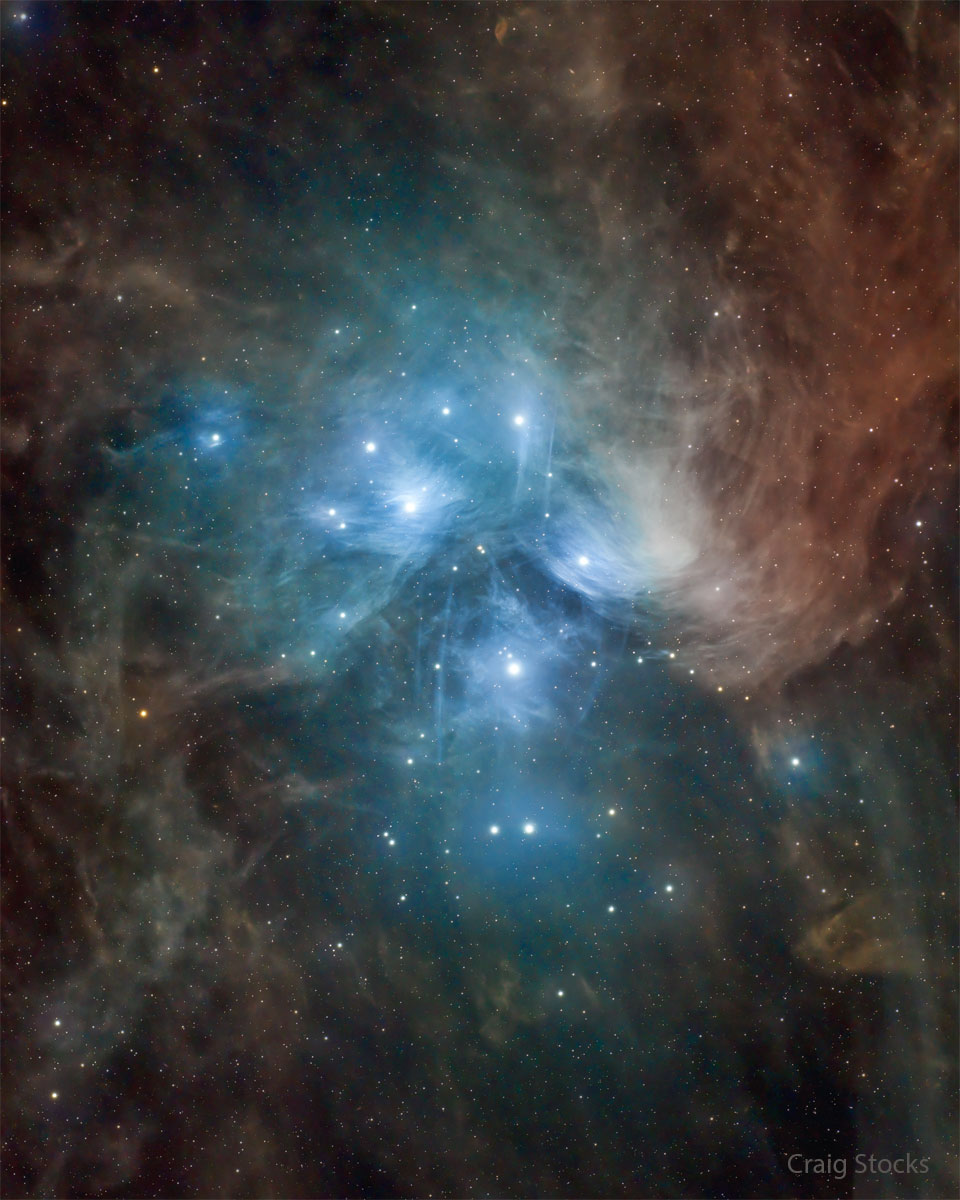Oh wow, this is a lovely picture, and I have very little time to write anything about it!
The colors here are subtle, soft, and incredibly pleasing. The blue light of these mostly B6V to B8V bright members of the Pleiades is being scattered and spread out around the stars like car headlights in a fog. (Except of course the halos surrounding the Pleiades are delightfully blue, whereas the fog halos of car headlights are often unpleasantly yellow.)
The size of the dust grains around the Pleiades are just the right size to scatter preferentially the blue light of the stars. And since these stars are blue in themselves, it is no wonder that the reflection nebulosity around them is blue!
But the photographer has also brought out dust of other colors farther away from the stars. I believe that the brown color seen in the dust at upper right in the APOD shows us what is probably the intrinsic color of dust of the Milky Way. However, we should also expect that the dust can reflect the "total color" of the Milky Way. This is probably mostly true of high galactic cirrus. I'm not sure that the dust around the Pleiades can "see" far enough to reflect the integrated color of the Milky Way.
Still, the light brown dust near Merope can be seen in other pictures of the Pleiades, too.
Both Roberto Colombari's and Rogelio Bernal Andreo's images show that dust appears to be lit up in light brown hues both near the Pleiades and around IC 348 at center left. In the case of IC 348, red hydrogen alpha also contributes to the color. Anyway, what I think I'm trying to say is this: Where the blue light ends in blue reflection nebulas, there could still be non-blue light scattered "beyond the blue" from the stars that lit up the reflection in the first place.
We often think of the Trifid Nebula like this: A pink blob next to a blue blob.
But in reality, a dusty reflection nebula wraps around much of the central pink nebulosity of the Trifid Nebula:
Astrophotographer and astronomer David Malin once described the "sort of non-blue" nebulosity that wraps around the Trifid Nebula as blue reflection nebulosity that is being reddened by dust. Perhaps that is the reason why the nebulosity surrounding the Pleiades in today's APOD takes on so many colors.
Note how the dust cloud in this old APOD gradually reddens and eventually completely blocks the light from stars behind it:
So dust can create blue reflection nebulas, but dust can also redden blue reflection nebulas. Reddening may cause blue reflection nebulas to look beige, or green. And long-wave light from hot stars may reach farther than their dominant blue light and lit up brown dust in lighter shades of brown.
Ann
 The Pleiades: Seven Dusty Sisters
The Pleiades: Seven Dusty Sisters













